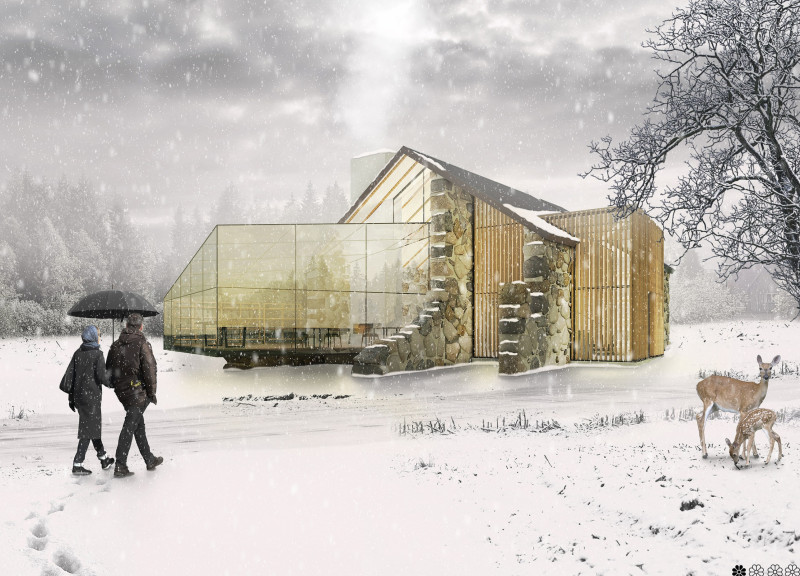5 key facts about this project
"THE TEA ELEMENTS - TEAMAKERS Guest House" embraces the bond between nature and human experience through the theme of tea production. Located within a historical setting, the design carefully distinguishes between artificial and natural spaces, offering various functions centered around tea while providing a retreat for visitors. The overall approach highlights how this environment can engage the senses and promote a deeper connection with the surroundings.
Architecture Concept
The layout divides spaces into two main categories: artificial and natural. Domestic activities like eating and sleeping fall into the artificial realm, while the processes related to tea production are positioned within natural spaces. The barn serves a key role in this arrangement, acting not only as a workspace for tea preparation but also as an educational venue for classes focusing on tea culture. This dual-functionality allows the barn to bridge everyday life and the artistry of tea, enriching the visitor's experience.
Role of Light
Light plays an important role in the design, representing the relationship with the natural environment. Areas closest to nature are flooded with natural light, while sections designated for domestic functions receive less illumination. The barn is designed to filter light in a way that mimics sunlight filtering through tree leaves. Wooden shutters add an extra layer of visual interest, creating shifting patterns and shadows throughout the day, which enhances the atmosphere within.
Materials and Structure
The project retains the original structure of a stone barn, which connects to the site's historical significance. This preservation serves to honor the past while introducing new, orderly elements that differ from the barn's existing form. The contrast between the contemporary design and the historical structure highlights the ongoing relationship between construction and nature, emphasizing the importance of both in shaping the overall experience.
Connection to Nature
The tea production process reflects the four elements of nature: earth, water, air, and fire. Each phase of production is linked to these elements. The growth stage, representing earth, speaks to nourishment and sustenance. The cooking stage blends fire and water, symbolizing exploration and shared experiences. Finally, the drying stage corresponds with air and highlights the spiritual aspects of tea preparation, inviting participants to engage deeply with the craft.
Dynamic Movement
Visitors navigate a clear path between the artificial exterior and the welcoming interior spaces. This design encourages interaction with the environment and the cultural significance of tea. The layout facilitates movement across different zones, with well-defined routes leading to areas where tea is produced. The thoughtful arrangement of light and space creates an inviting atmosphere that enhances the overall experience of tea culture, inviting exploration and reflection.



























